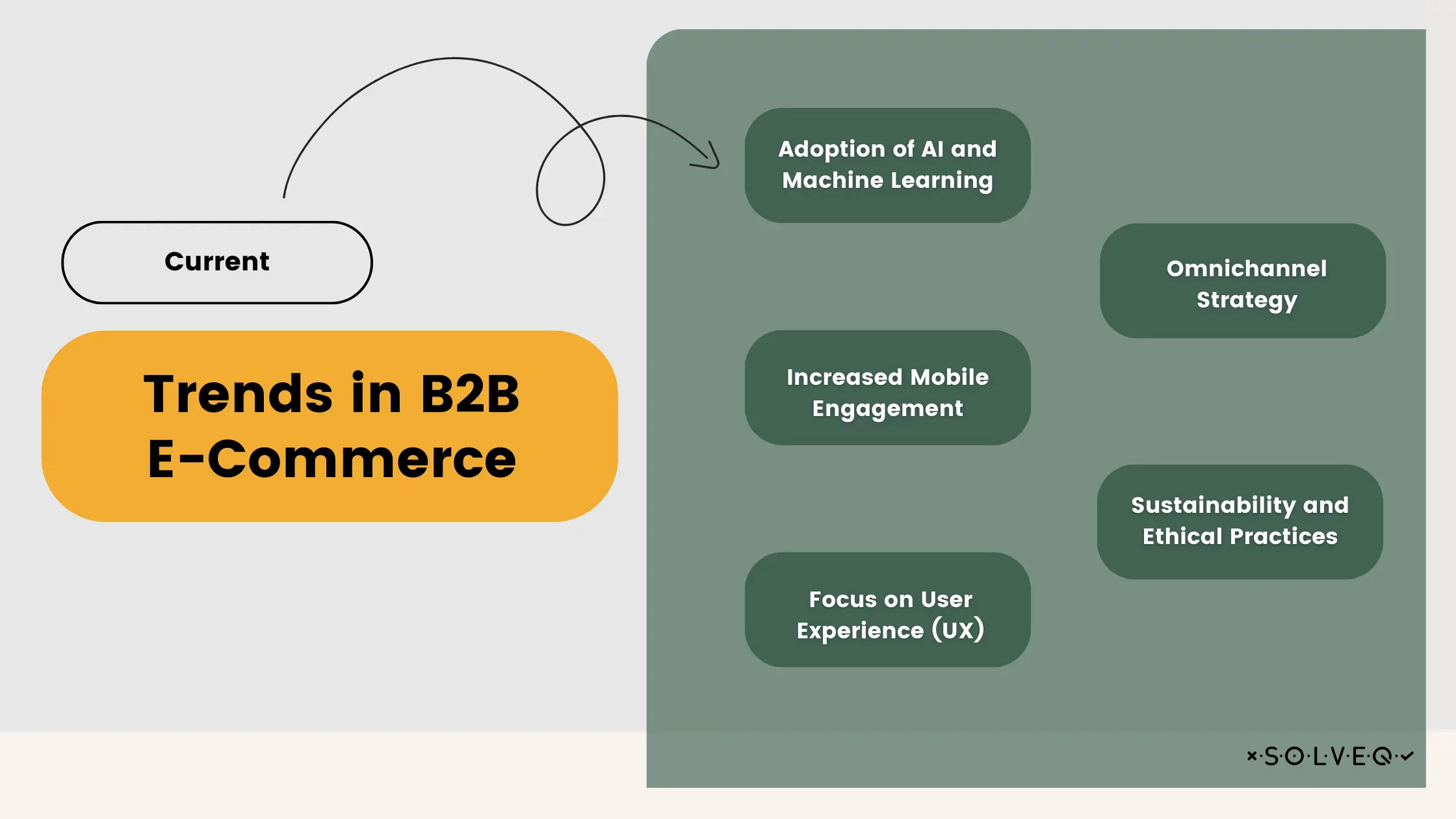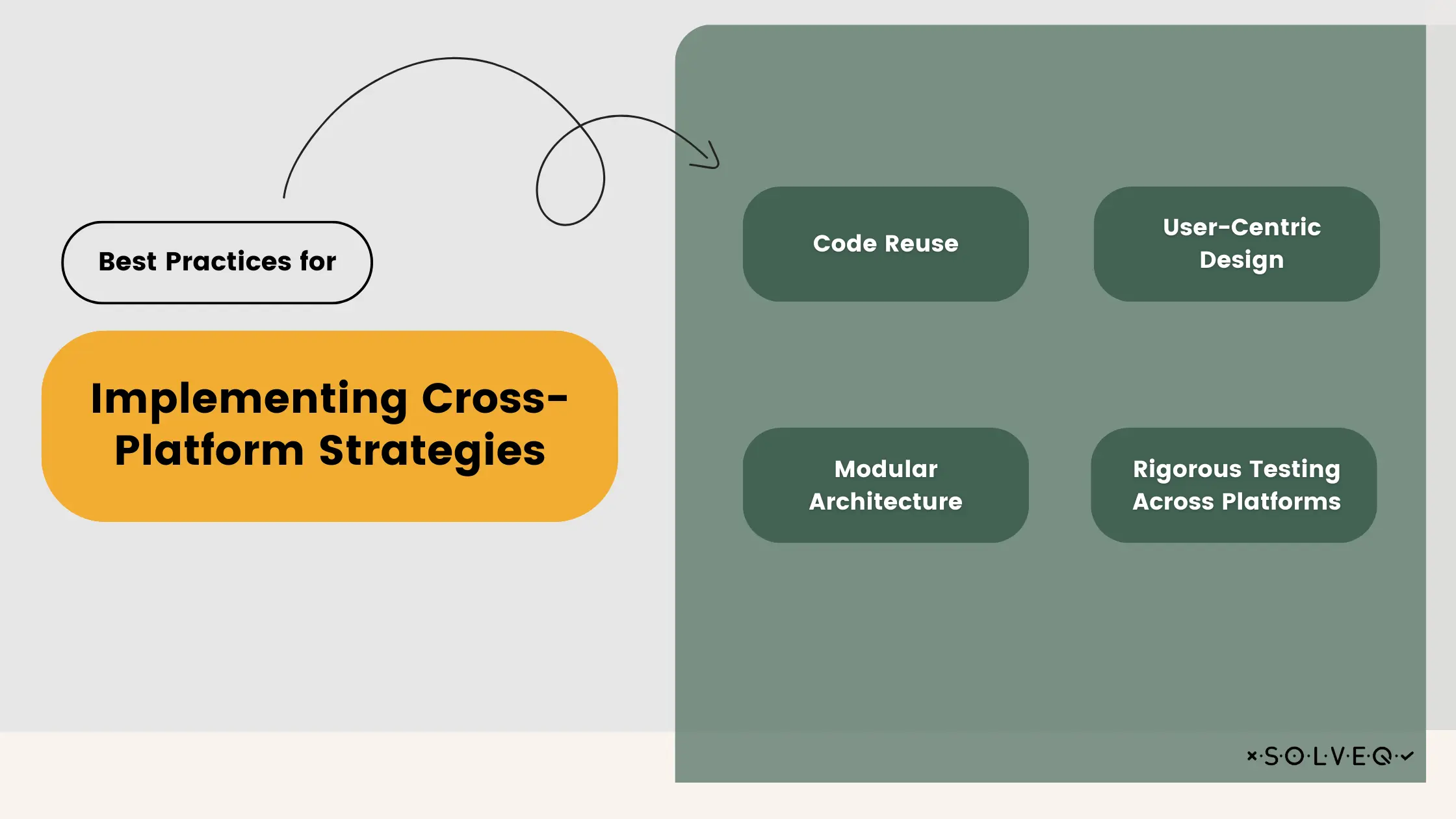How Cross-Platform Strategies Are Transforming B2B eCommerce
13 Feb 2024 • 13 min read

Marcin Kulawik

B2B eCommerce, focusing on digital transactions between businesses, differs markedly from B2C's consumer-centric approach. Characterized by bulk orders, negotiation in pricing, and long-term contracts, B2B transactions cater to distinct business needs. This article explores these unique aspects of B2B eCommerce, providing key insights for businesses in the digital marketplace.
The Importance of B2B eCommerce
In the modern business landscape, the importance of B2B eCommerce cannot be overstated. It represents not just a shift in transaction methods but a complete transformation of traditional business operations and strategies. This sector's growth and influence extend far beyond mere sales figures, impacting the very fabric of the global economy and corporate functionality. Key aspects of this transformative journey include:
- Market Growth and Economic Contribution: The B2B eCommerce market has experienced exponential growth, with statistics pointing towards a continued rise. This expansion is a major contributor to global economic development, encouraging innovation and job creation across various industries.
- Catalyst for Digital Transformation: eCommerce is pivotal in driving the digital transformation of businesses. It allows for streamlined processes, cost reduction, and wider market access. This digital evolution levels the playing field, enabling smaller businesses to compete effectively in the global market.
- Shift in Customer Expectations: B2B buyers are increasingly seeking a shopping experience akin to B2C platforms. They demand personalized services, mobile accessibility, and self-service capabilities. Adapting to these changing preferences is crucial for businesses aiming to enhance customer engagement and loyalty.
These developments in B2B eCommerce signify a profound change in how businesses operate and interact with their customers. As this sector continues to grow and evolve, its role in shaping the future of global commerce becomes increasingly evident. Businesses that embrace and adapt to these changes are likely to find themselves at the forefront of their respective industries.
Current Trends in B2B eCommerce
As we delve deeper into the impact and evolution of B2B eCommerce, it's essential to explore the current trends shaping this dynamic field. These trends not only reflect the technological advancements but also signify a shift in business priorities and consumer expectations. Key trends include:

- Adoption of AI and Machine Learning: B2B platforms are increasingly integrating AI and machine learning to offer personalized experiences. These technologies enable predictive analytics, enhancing decision-making and forecasting. Automated customer service, powered by AI, is also becoming commonplace, offering efficient and scalable customer interactions.
- Increased Mobile Engagement: With the rising use of smartphones and tablets in the business arena, mobile-responsive designs and dedicated mobile apps have become crucial for B2B eCommerce. This trend underscores the need for platforms to be accessible and functional across various mobile devices, catering to the on-the-go needs of modern professionals.
- Focus on User Experience (UX): There's a growing emphasis on enhancing UX to simplify the buying process in B2B eCommerce. This includes improved search functionality, user-friendly interfaces, and customized dashboards, all designed to facilitate easier navigation and transaction processes for users.
- Omnichannel Strategy: B2B businesses are adopting an omnichannel approach, integrating multiple sales channels like online platforms, offline stores, and social media. This strategy aims to provide a cohesive and seamless customer experience, regardless of the channel used for transaction or engagement.
- Sustainability and Ethical Practices: Sustainability and corporate responsibility are gaining prominence in B2B transactions. More companies are prioritizing these aspects, recognizing their impact on brand reputation and buyer choices. This trend reflects a broader shift towards ethical business practices and sustainable development in the corporate world.
These trends illustrate the ongoing evolution of B2B eCommerce, highlighting its adaptability and responsiveness to technological advancements and changing market needs. As these trends unfold, they offer insights into the future direction of B2B commerce and the strategies companies might adopt to stay competitive and relevant.
Benefits of Cross-Platform Strategies for B2B eCommerce
As we continue to explore the evolving landscape of B2B eCommerce, following the trends of AI integration, mobile engagement, and omnichannel strategies, it becomes clear that cross-platform strategies are another pivotal element in this domain. The advantages of such an approach are manifold:

- Broader Reach and Accessibility: Cross-platform development allows B2B platforms to be accessible across a variety of devices and operating systems. This inclusivity significantly expands the potential customer base, making services available to a wider audience and aligning with the increasing mobile and multi-device usage in business environments.
- Cost-Effectiveness: Implementing a cross-platform strategy offers considerable cost savings in both development and maintenance. By creating a single application that functions across multiple platforms, businesses avoid the higher expenses and complexities associated with developing and maintaining separate native applications for each platform.
- Consistency in User Experience: A key to building brand loyalty and user satisfaction is providing a consistent user experience. Cross-platform strategies ensure that users encounter a uniform interface and functionality, regardless of the device or platform they use. This consistency reinforces brand identity and enhances the overall user experience.
- Faster Time to Market: Cross-platform solutions can significantly accelerate the development process. This agility allows businesses to quickly adapt to market changes or launch new offerings, staying ahead in a competitive and rapidly evolving digital marketplace.
Linking these benefits to the earlier discussed trends, it becomes evident that cross-platform strategies are not just a technical choice, but a strategic decision. By embracing such approaches, B2B eCommerce platforms position themselves to effectively meet diverse customer needs, optimize their resource allocation, and maintain a strong, adaptable presence in the digital economy.
Key Technologies Driving Cross-Platform B2B eCommerce
In the realm of B2B eCommerce, the pursuit of efficient and versatile cross-platform strategies is significantly driven by several key technologies and frameworks. These include:
Leading Technologies and Frameworks
At the forefront are technologies like React Native, Flutter, and Xamarin. React Native, developed by Facebook, allows for building native-like apps using JavaScript and React. Flutter, Google's UI toolkit, enables the creation of natively compiled applications for mobile, web, and desktop from a single codebase. Xamarin, a Microsoft-owned framework, uses .NET and C# to create apps for Android, iOS, and Windows. Each of these frameworks offers unique advantages in terms of developer productivity, community support, and compatibility with existing infrastructure.
Role of Web Technologies
Web technologies like HTML5, CSS3, and JavaScript are pivotal in creating responsive designs that adapt seamlessly across different platforms and devices. These technologies enable developers to build interfaces that are flexible, visually appealing, and consistent, ensuring a high-quality user experience regardless of the device or screen size.

Challenges and Considerations
While the benefits of cross-platform development in B2B eCommerce are clear, there are also several challenges and considerations:
- Performance Issues and Platform-Specific Features: One common challenge is ensuring that the application performs efficiently across all platforms. There can also be difficulties in accessing platform-specific features or in maintaining the native look and feel of the app on different operating systems.
- Maintaining a Unified Codebase: Another significant challenge is managing a unified codebase that works well across various platforms without compromising on functionality or user experience.
To navigate these challenges, businesses often adopt a combination of strategies. For instance, leveraging the power of native modules in frameworks like React Native or using platform-specific code in Flutter can help overcome performance issues. Additionally, maintaining a clear architecture and modular codebase can simplify the process of updating and managing the application across platforms.
Through examples and case studies, it's evident that successful cross-platform B2B eCommerce solutions often involve a balanced approach. This includes choosing the right technology stack, understanding the unique requirements of each platform, and prioritizing user experience while managing technical complexities. As technologies continue to evolve, businesses in the B2B eCommerce sector must remain adaptable, continually assessing and updating their strategies to leverage these powerful tools effectively.
Best Practices for Implementing Cross-Platform Strategies
Building on the discussion of key technologies and the challenges in cross-platform B2B eCommerce, it's crucial to consider the best practices that underpin successful implementation. These strategies include:

- Code Reuse: This is a fundamental aspect of cross-platform development. Efficient code reuse not only streamlines development processes but also ensures consistency across different platforms. It allows for the maintenance of core functionality while enabling customization for specific platform requirements.
- Modular Architecture: Implementing a modular approach in software architecture is crucial. This involves organizing the code into independent modules, which simplifies updates, maintenance, and scalability. It also enhances the flexibility to adapt to different platform needs without overhauling the entire codebase.
- User-Centric Design: Prioritizing user-centric design is essential. This means creating interfaces and user interactions that are intuitive, appealing, and tailored to the needs of the target audience. A focus on user experience ensures that the application is not just functional but also enjoyable and easy to use across different platforms.
- Rigorous Testing Across Platforms: To ensure a seamless and consistent user experience, comprehensive testing across various platforms is imperative. This includes functional, usability, and performance testing, addressing any platform-specific quirks or issues. Thorough testing helps in identifying and resolving any discrepancies, ensuring a high-quality user experience regardless of the device or operating system.
By adhering to these best practices, businesses can effectively leverage cross-platform strategies in their B2B eCommerce endeavors. This approach not only leads to efficient and cost-effective development but also results in robust, user-friendly applications that cater to the diverse needs of a wide range of users.
Summary
In the rapidly evolving realm of eCommerce, B2B transactions stand out with unique needs like bulk ordering and customized pricing. The growth of this market underscores the shift towards digital transformation and the rising expectations for consumer-like experiences in B2B interactions. Cross-platform strategies are pivotal in addressing these trends, offering accessibility and a unified user experience. As the future of B2B eCommerce unfolds, embracing these innovations is key. Our company's expertise in cross-platform software development positions businesses at the forefront of this digital evolution.
Share:
Looking for expert development team?
Schedule a call with Tech Consultant

Marcin Kulawik
Founder and CEO of SolveQ. Huge fan of building things with purpose, agility, and having fun while changing the World. Loves his family, teammates, and nature.